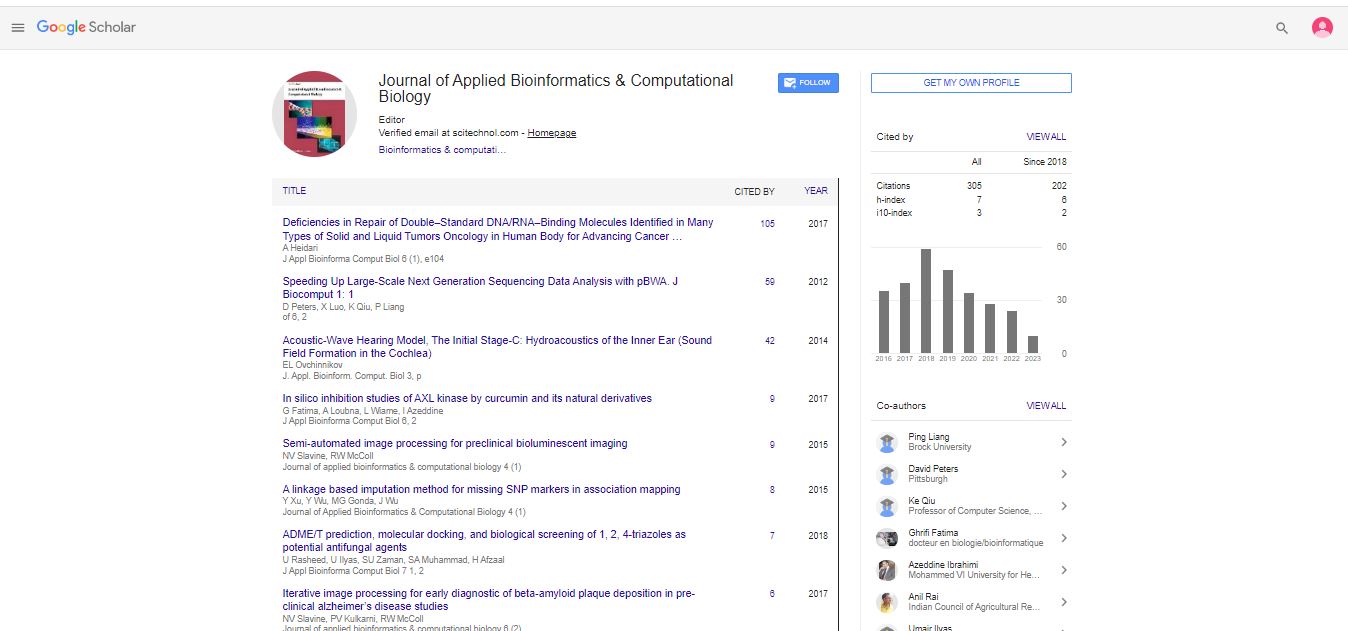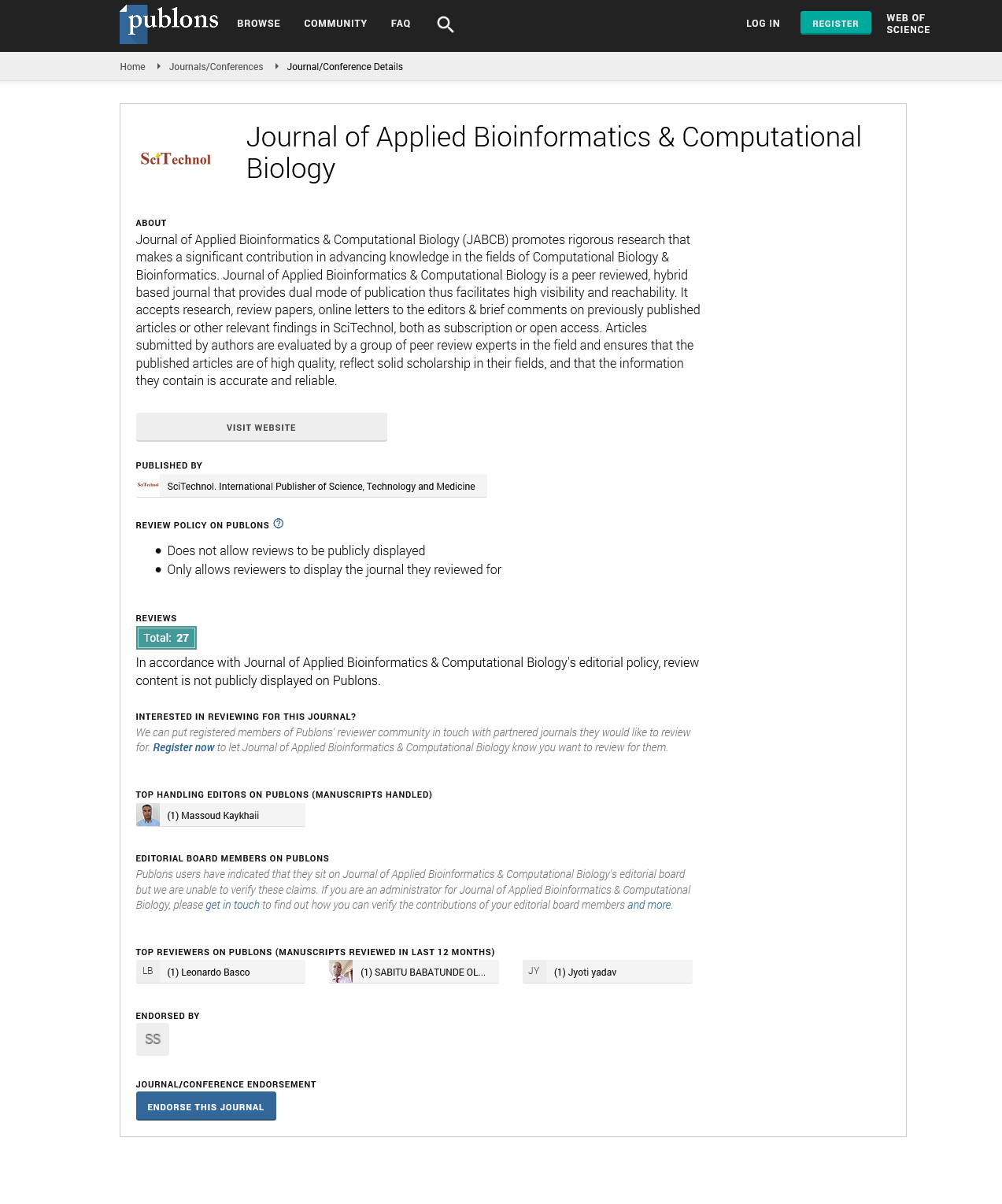Identification of the calcium-dependent gating and targeted-drug discovery of calcium-activated chloride channels
Hailong An, Chunli Pang, Shuai Guo, Yafei Chen and Hailin Zhang
Hebei University of Technology, China
: J Appl Bioinforma Comput Biol
Abstract
Calcium-activated chloride channels (CaCCs) play vital roles in a variety of physiological processes. Transmembrane protein 16A (TMEM16A) has been confirmed as the molecular counterpart of CaCCs which greatly pushes the molecular insights of CaCCs forward. However, the detailed mechanism of Ca2+ binding and activating the channel is still obscure. To identify the calcium binding site, the authors presented a computational approach which combined the fragment homology modeling with molecular dynamics simulation. Our data show that the first intracellular loop serves as a Ca2+ binding site including D439, E444, and E447. The experimental results indicate that a novel residue, E447, plays a key role in Ca2+ binding. Compared with WT TMEM16A, E447Y produces a 30-fold increase in EC50 of Ca2+ activation and leads to a 100-fold increase in Ca2+ concentrations that is needed to fully activate the channel. It is well established that TMEM16A is a drug target in many diseases, including cystic fibrosis, hypertension, asthma, and various tumors. Therefore, identifying potent and specific modulators of the TMEM16A channel is crucial. Here, the authors identified two modulators from the traditional Chinese medicine, an activator, Ginsenoside Rb1 (GRb1) which can increase the amplitude and frequency of contractions in an isolated guinea pig ileum assay in vivo and serve as a lead compound for the development of novel drugs for the treatment of diseases caused by TMEM16A dysfunction, an inhibitor, matrine which can dramatically inhibit the growth of lung adenocarcinoma tumors in xenografted mice, and may function as an anti-lung adenocarcinoma drug targeting at TMEM16 channels.
Biography
Hailong An received his PhD degree in Biophysics in Hebei University of Technology in 2005. After that, he was appointed to the faculty in Institute of Biophysics, Hebei University of Technology. From 2006 to 2008, he worked in Hebei Medical University under supervision by Prof. Hailin Zhang as a postdoc. Awarded by China Scholarship Council, he spent 20 months in Prof. Diomedes E. Logothetis’ Lab as a visiting scholar. He focuses on understanding the structure-function relationship of ion channels, the relationship between ion channels and major diseases and drug screening targeting at ion channels. More than 50 papers have been published in academic journals such as Scientific Reports, Journal of Biological Chemistry, British Journal of Pharmacology etc., and more than 40 papers were included in the SCI (total impact factor: 126.52), the paper was cited more than 200 times.
E-mail: hailong_an@hebut.edu.cn
 Spanish
Spanish  Chinese
Chinese  Russian
Russian  German
German  French
French  Japanese
Japanese  Portuguese
Portuguese  Hindi
Hindi 
